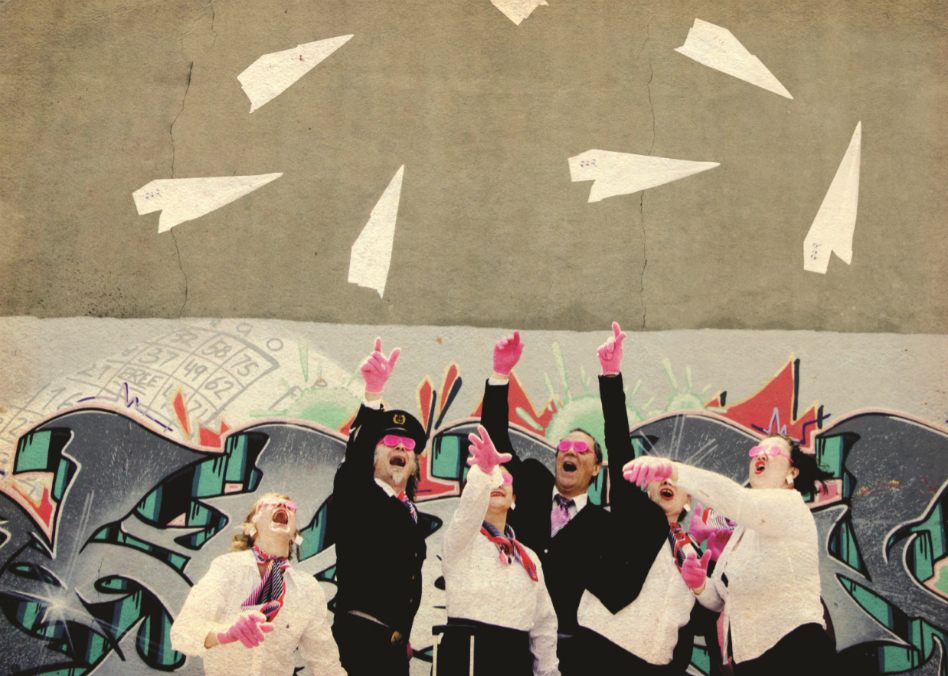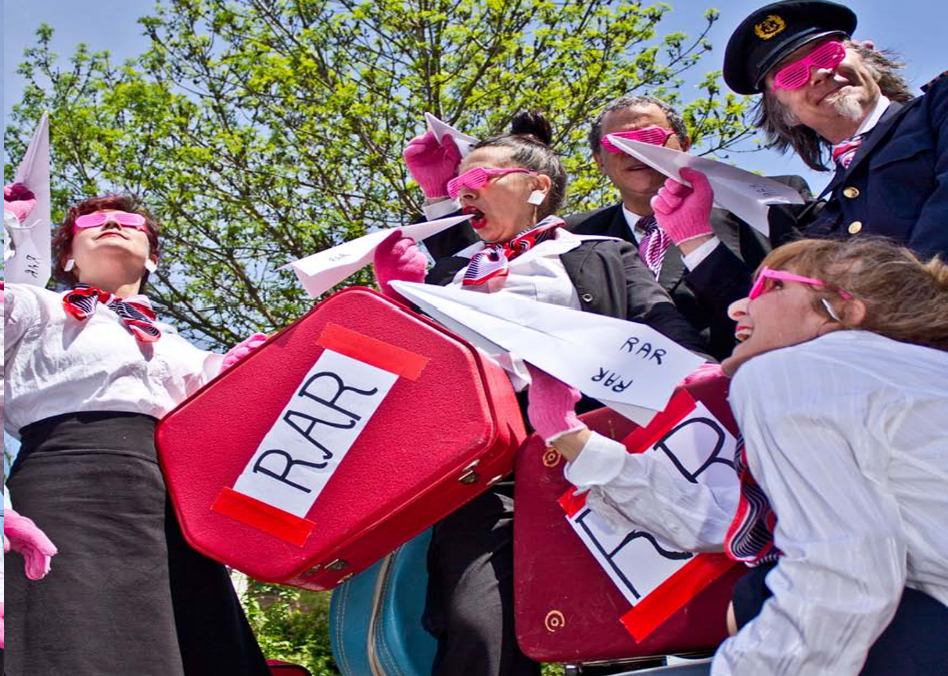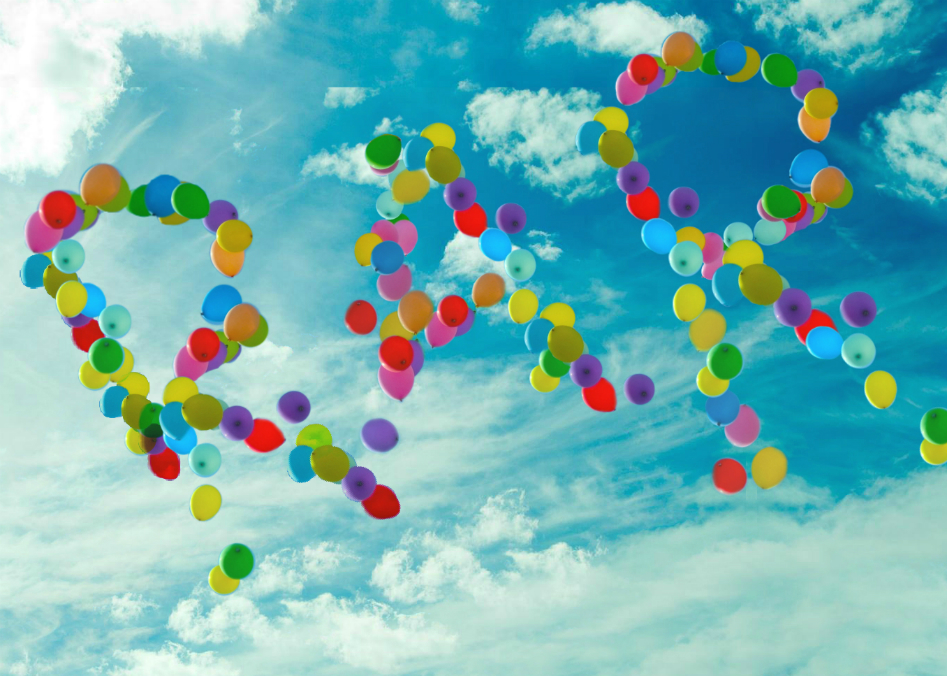History
 La création du regroupement des arts de rue du Québec en 2009 est issue de la volonté des artistes et des organismes professionnels du milieu de rassembler les compagnies et les artistes de rue, qui exercent leurs disciplines artistiques de façon professionnelle sur des sites au cœur de l’espace public et/ou hors des lieux culturels conventionnels.
La création du regroupement des arts de rue du Québec en 2009 est issue de la volonté des artistes et des organismes professionnels du milieu de rassembler les compagnies et les artistes de rue, qui exercent leurs disciplines artistiques de façon professionnelle sur des sites au cœur de l’espace public et/ou hors des lieux culturels conventionnels.
The creation of the Regroupement des arts de rue du Québec in 2009 is the result of the desire of artists and professional organizations in the field to bring together companies and street artists who practice their artistic disciplines professionally on sites in the heart of the public space and/or outside of conventional cultural venues.
It was in 1950 that Quebec became familiar with creation in the public space and became very fond of it. Numerous theater, music, dance, circus and puppet artists find in this free form a privileged vehicle for a richer encounter with the public and to nourish their boundless creativity. The street arts have the characteristic of adapting to the places of representation and are sometimes even conceived according to the specificities of a particular site. They are based on a great wealth of artistic professions and disciplines, including fixed or portable scenography, adaptable to the various audiences encountered in the public space.
Since the last quarter of the 20th century, the main festivals in Quebec have included street arts in their programming, notably the Just For Laughs, Jazz, Francofolies and Quebec City Summer festivals, as well as numerous regional festivals in Sherbrooke, Trois-Rivières, Baie-Saint-Paul and Gaspé, and the Shawinigan Street Theatre Festival, which later moved to Lachine. Major events also call upon street arts for their originality, their multidisciplinary nature and their proximity to the public, such as the organization of the prestigious 350th anniversary of Montreal in 1992.
It was at this time that the practice was enriched by encounters with international companies presented in major festivals, as well as the competition of theater school graduates. A back-and-forth between the theatre in winter and the street in summer began for certain companies, who translated their multidisciplinary experience acquired on the street into the theatre.
Some companies, such as L'Ensemble Karel, Les Walkyries, Les Sages Fous, La Tête de pioche, L'Orchestre d'hommes-orchestre, LaboKracBoom and Les Foutoukours, even began to have an international impact.
On October 2, 2005, for the first time, a round table invited all the artisans working in street performance (artists, presenters, producers, ...). Organized by the street theater company Toxique Trottoir, the theme of the round table was Street theater in Quebec: an emerging art form?
 La conversation entre artistes, qui se vit comme une grande famille puisqu'ils sont toujours plusieurs dizaines à se côtoyer dans le cadre des grands événements du Québec, se poursuit. Elle culmine en 2008 avec l’organisation du 400e anniversaire de la fondation de Québec où sous l'égide de Michel Barrette, directeur de la programmation hors les murs, les compagnies des Arts de rue se retrouvent pendant plusieurs mois à performer côte à côte.
La conversation entre artistes, qui se vit comme une grande famille puisqu'ils sont toujours plusieurs dizaines à se côtoyer dans le cadre des grands événements du Québec, se poursuit. Elle culmine en 2008 avec l’organisation du 400e anniversaire de la fondation de Québec où sous l'égide de Michel Barrette, directeur de la programmation hors les murs, les compagnies des Arts de rue se retrouvent pendant plusieurs mois à performer côte à côte.
The conversation between artists, which is experienced as a large family since there are always several dozen of them working together in the context of major events in Quebec, continues. It culminated in 2008 with the organization of the 400th anniversary of the founding of Quebec City, where, under the aegis of Michel Barrette, director of the off-site programming, the Street Arts companies found themselves performing side by side for several months.
The setbacks of the Shawinigan Street Festival, nevertheless a fundamental actor in the development of the milieu, put a strain on several organizations that joined together under the coalition of aggrieved artists due to lack of payment.
These different episodes contribute to the birth of the Regroupement des arts de rue du Québec, which was created on March 16, 2009. The association's goal is to bring together artists and companies who wish to promote their artistic practice on the Quebec open stage. The RAR du Québec, named as such by its members, perpetuates the development of a network of solidarity and exchanges that can ensure the recognition and deployment of the practice of street arts in Quebec on a national and international level. Initially located in the Villeray Centre-Nord district, in the premises of La Cenne, the group has now taken root in the Centre Gabrielle-et-Marcel-Lapalme in the heart of Rosemont, a district where street arts are abundant.
Several events are then organized by the RAR to gather the artists. In 2010, the group invited Floriane Gaber, author of several books on the street arts: Comment ça commença; Les arts de la rue dans le contexte des années 70 and Quarante ans d'arts de la rue to answer the questions of the members and to better understand the structure of the sector in French territory. This perspective on the situation of the street arts in Quebec serves as a springboard for reflection for the positioning of artists and structures. The RAR also takes part in Rue Libre! The international day of street arts and free expression in the public space to claim its membership to the great international family.
A round table with Les Sages fous, an organization of unusual theater, to present their journey and to help the international development of the companies is part of the different meetings and trainings that are becoming more and more frequent, equipping the street artists to their unique and particular condition (screening of the series Les fous de la rue - round table on fees, on cultural mediation, etc.). Several volunteers then devoted themselves to the organization, setting up the Tintamarre, a street arts newspaper.
Anaïs Pourrit will support the production of the first Levée de fun, a festive event where entresorts and performances of all kinds will be held to finance the activities of the RAR. The fundraiser was a great success and was followed by two other festive proposals, including the crazy 29th when the Quartier des Spectacles financed an event at Place Émilie Gamelin that brought together over 40 artists.
In 2013, Le RAR du Québec partners with Rideau to create a flagship event during the market which, for the first time, makes room for the Ars de rue. A specific category dedicated to the practice was formalized, a conference was presented and Nomadurbains and Toxique Trottoir were given a presentation slot for their respective shows.
Without the means to match its ambitions, RAR and the entire public space arts milieu got a new lease on life thanks to the speed paneling events that brought together artists and presenters. The project was so successful that for its third year in 2018, it was produced by the Conseil des arts de Montréal: 333 minutes Hors les murs and repeated in 2019.
 Le Conseil des arts de Montréal reconnaît dès lors les arts de rue comme une discipline légitime et offre aux artistes du milieu des subventions qui leurs sont spécifiquement dédiés. Une première au Québec! En plus de cette ouverture au milieu, en 2019, le CAM soutient financièrement le regroupement. Cette nouvelle autonomie accordée au RAR du Québec sert de fer de lance à un financement de différents bailleurs de fonds dont le Conseil des arts et des lettres du Québec et le Conseil des arts du Canada qui mènera à l’embauche d’une coordonnatrice en 2018 et, ainsi, d'asseoir des réalisations plus audacieuses.
Le Conseil des arts de Montréal reconnaît dès lors les arts de rue comme une discipline légitime et offre aux artistes du milieu des subventions qui leurs sont spécifiquement dédiés. Une première au Québec! En plus de cette ouverture au milieu, en 2019, le CAM soutient financièrement le regroupement. Cette nouvelle autonomie accordée au RAR du Québec sert de fer de lance à un financement de différents bailleurs de fonds dont le Conseil des arts et des lettres du Québec et le Conseil des arts du Canada qui mènera à l’embauche d’une coordonnatrice en 2018 et, ainsi, d'asseoir des réalisations plus audacieuses.
The Conseil des arts de Montréal now recognizes street art as a legitimate discipline and offers artists in the field grants that are specifically dedicated to them. A first in Quebec! In addition to this opening to the milieu, in 2019, the CAM supports the group financially. This new autonomy granted to the Quebec RAN serves as a spearhead for funding from various funders including the Conseil des arts et des lettres du Québec and the Canada Council for the Arts, which will lead to the hiring of a coordinator in 2018 and, thus, establish more daring achievements.
In 2018, RAR is partnering with CINARS, allowing nine companies to present a showcase as part of the event's programming. The Regroupement also has a booth at the event, which facilitates meetings with a range of presenters from Canada and abroad. The presence of the RAR at CINARS allowed three of the companies to be presented in Toronto and another to develop in Korea.
In the spring of 2019, the Regroupement is organizing a roundtable for its members on dissemination in France with Benjamin Ladjadj, a French street arts artist and former coordinator of RAR's French sister organization, the Fédération Nationale des Arts de la Rue, as a guest. The RAR continues its actions with presenters by sharing its site with a complete list of agents and by relaying to companies lists of diffusions. Several committees were created and the members of the group were invited to get involved and to express themselves according to the issues that are important to them: the good practices committee, for example, intends to offer street artists the possibility of acting on their condition, through projects or concrete actions. The Aurillac committee and the CaméRAR committee will be solid bases and places of discussion where large-scale projects will be developed. More recently, the RAR place committee proposes a platform where the foundation of a creation place for street artists is discussed and envisaged.
In 2020, RAR participates in the RIDEAU event, the most important francophone meeting of the performing arts in America. Under the banner La Grande Messe du RAR, the Regroupement offers the public and presenters a festive happy hour to present the work of fifteen street arts companies to nearly 80 presenters, in addition to having a booth on site. The event was a success and will be repeated in February 2022.
Since 2020, the RAN has seen its membership grow at the same pace as its projects, its training offers and its communication tools. Initiatives such as CameRAR, a video project by a professional videographer aimed at RAN members at very low cost, have certainly been the driving force behind several new memberships.
The creation of common tools such as a Standard Contractual Clauses document and lists of presenters are offered to members in addition to multiple training sessions for all needs and all levels, notably the Dramaturgie en Espace Public training session offered in collaboration with the FAI AR, a school dedicated to creation in public spaces located in Marseille, or the Bouffons training session led by Dolorèze Léonard, a famous Quebec clown artist and co-founder of Cirque du Soleil.
Supported by a committed and serious board of directors, RAR can boast of having more than sixty active artist members, fifteen partner members, as well as maintaining notable international links with renowned organizations, such as the Fai-Ar art training school and the French festival Aurillac, to name a few.
